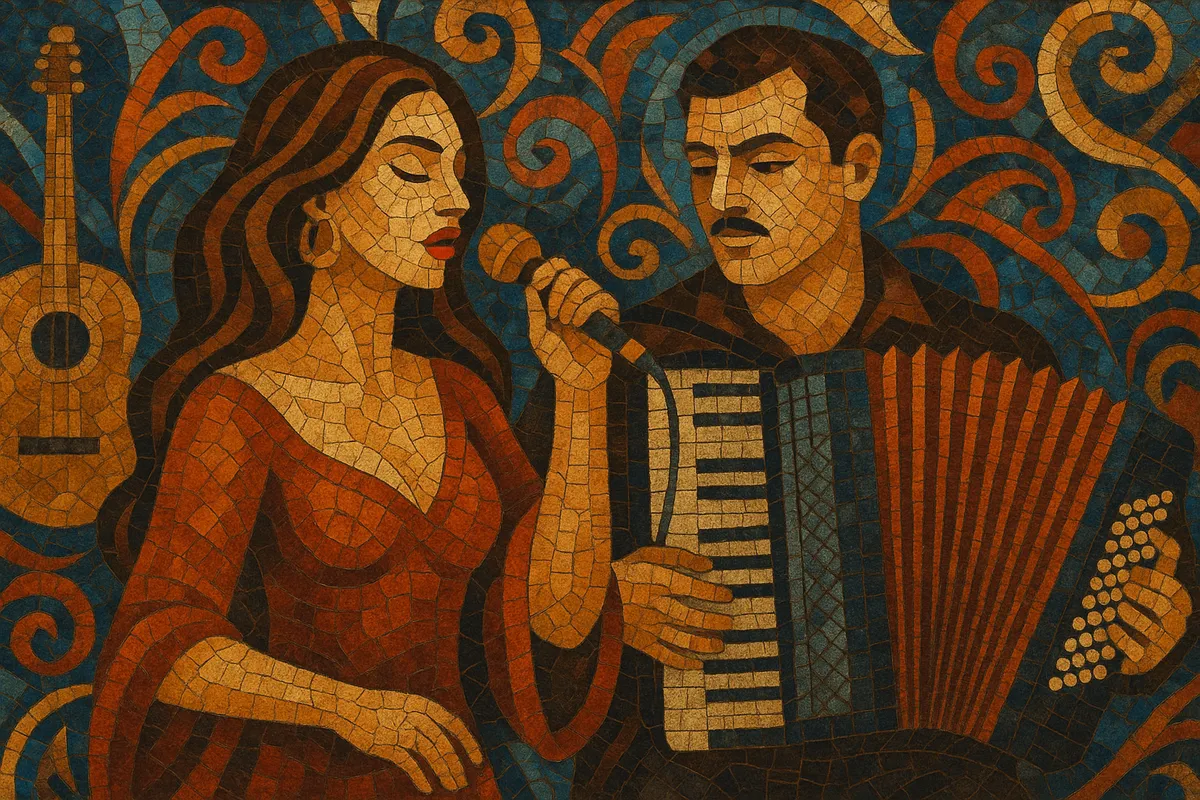Turbo-folk is a Balkan pop-folk style that fuses contemporary pop and dance production with traditional folk melodies, ornamented vocals, and Eastern (often "oriental") modal flavors.
It is characterized by punchy 4/4 club beats, catchy hooks, and melodramatic lyrical themes about love, nightlife, heartbreak, and status, while retaining Balkan vocal inflections and melodic turns.
The sound ranges from glossy dance-floor anthems to sentimental ballads, often featuring synthesizers, drum machines, accordion or clarinet lines, and guitar, with frequent use of Phrygian dominant/Hijaz-like scales.
Turbo-folk emerged in Serbia as a modernization of Yugoslav pop-folk (novokomponovana muzika), adopting dance and pop production while retaining folk vocalism and melodic language. Early mainstream pop-folk stars from the 1980s (e.g., Lepa Brena) laid the groundwork for a more beat-driven, club-oriented direction that would be labeled “turbo-folk.”
During the 1990s, Serbian labels and TV networks (notably Grand Production and commercial broadcasters) amplified turbo-folk’s profile. The style became a dominant commercial sound across the region, with acts such as Ceca and Dragana Mirković popularizing a formula of danceable 4/4 grooves, synthesized arrangements, and emotive folk-derived melodies. Its combination of folklore signifiers, nightclub aesthetics, and pop-star glamour made it both massively popular and culturally debated.
In the 2000s, turbo-folk consolidated as a regional mainstream. Production grew sleeker, borrowing from Eurodance, trance, and contemporary pop, while live instrumentation (accordion, clarinet, brass, guitar) remained common for hooks and solos. The diaspora scenes across Europe helped spread the sound to new audiences and venues, reinforcing its club identity.
From the 2010s onward, turbo-folk increasingly hybridized with EDM, trap, and hip-hop aesthetics (heavier bass, 808s, autotune) while preserving folk modal fingerprints and vocal ornamentation. Collaborations with rap/trap artists and streaming-era distribution brought the sound to younger listeners, ensuring continued relevance and a steady flow of club-oriented hits and power ballads.
Write primarily in 4/4 at 100–125 BPM for club tracks; slow to 70–95 BPM for ballads. Use tight, punchy drum machines with strong kick–snare patterns and bright hi-hats to keep a dance-floor feel.
Craft lead melodies and vocal lines using Phrygian dominant/Hijaz-like scales or closely related Balkan folk modes. Employ melismatic, ornamented phrasing and expressive slides typical of regional folk singing.
Keep harmony straightforward (I–VI–VII or minor i–VII–VI progressions are common). Layer synth pads and arpeggios beneath a prominent lead (vocal or synth/accordion/clarinet). Add electric guitar or brass stabs for emphasis, and use short instrumental riffs between vocal lines.
Combine modern pop/dance tools (synths, romplers, sidechained pads, 808s) with folk signifiers (accordion, clarinet, tambura, occasional brass). Lead sounds often have a nasal, reedy quality to echo folk timbres. Use tasteful pitch bends and portamento on synth leads to mimic vocal ornaments.
Write direct, emotive lyrics about love, jealousy, nightlife, heartbreak, pride, and aspiration. Hooks should be memorable and repeatable; verses can tell concise, melodramatic stories. Vocals are upfront, slightly compressed, with occasional autotune for modern sheen.
Follow a pop-friendly structure (intro–verse–pre–chorus–chorus–verse–chorus–bridge–final chorus). Build energy with risers and fills into choruses; contrast with sparse breakdowns that spotlight the vocal. For ballads, feature acoustic or semi-acoustic intros before introducing modern drums.


